 |
An Aboriginal Presence
We Are the Land
We find the knowledge of our ancestors in:
|
the basket of spruce root and cedar boughs,
used for collecting clams on the Pacific foreshore in the early
1900s;
Clam Basket
Kwakwaka'wakw (Kwakiutl)
British Columbia
Before 1885
Spruce root and red cedar wood
Canadian Museum of Civilization, VII-E-329, CD97-258-058
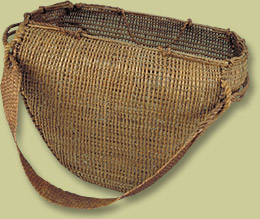
|
|
the nettle harvested for fibre, the fibre
made into cord, the cord made into nets for catching the
eulachon, or candle-fish, that migrate annually to the rivers of
the Pacific Coast;
|

Eulachon Net
Tlingit
Alaska
Undated
Mountain goat wool, wood and cotton
Canadian Museum of Civilization, VII-A-202,
CD95-624-086
|
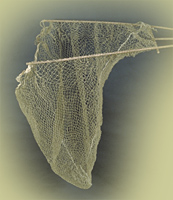
|
|
the oil made from the eulachon, as a food, as
an item for trade, and as a gift;
Ladle for Eulachon Grease
Gitksan
British Columbia
Early 1900s
Wood
Canadian Museum of Civilization, VII-C-1616,
D2002-006421, CD2002-068
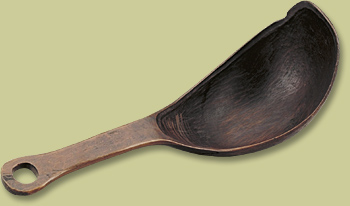
|
|
the bow and arrows used to hunt caribou on the
tundra;
Hunting Equipment
Inuinnaq (Copper Inuit)
Nunavut
Before 1916
Sealskin, squirrel skin, feathers, wood, bone and sinew
Canadian Museum of Civilization, IV-D-73 a-q,
CD94-677-009
This equipment comprises a bow and case with quiver containing
seven arrows, a tool bag containing arrowheads, two pieces of
broken arrow shaft, a sinew twister, two marlin spikes, two meat
pins, a pin for the blood bag, an arrow point, two strips of
willow bark, a piece of wood for trimming arrow feathers, and a
squirrel-skin bag containing feathers and a piece of sealskin
originally sewn to the bow case to hold a hunting knife.
Attached to the case are a bone carrying handle, two toggles for
the strap, four ptarmigan pegs, and a handle and a pin for the
blood bag.
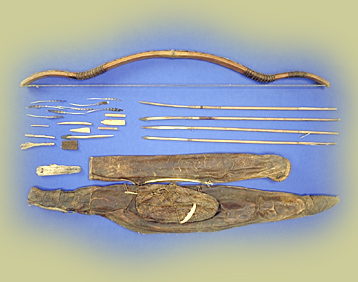
|
|
the poncho made of silver willow, and the cape
made of furs in the Nicola River valley;
Rain Cape
Nlaka'pamux
British Columbia
Before 1913
Elaeagnus bark, vegetable fibre, dye and animal hide
Canadian Museum of Civilization, II-C-627, CD96-969-027
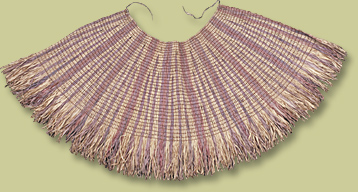
|
|
the drying rack made to hold Saskatoon berries,
spread apart to dry singly, or mashed and boiled and spread
into cakes.
Berry Drying Rack
Gitksan
British Columbia
About 1920
Cedar splints
Canadian Museum of Civilization, VII-C-1041,
CD98-043-087
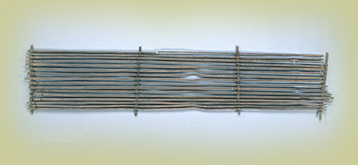
|
"Our clothes were made of moose hide, caribou hide, otter
skin, weasel pelt, rabbit skin. Those are the things we relied
on for clothing. We had rabbit skin hats or rabbit skin parkas
with hoods. Rabbit was the warmest for clothing. You can sleep
anywhere with your rabbit skin parkas and just use spruce boughs
for cover. For shoes which would not soak through, our moccasins
were made from top of moose hide. The top layer of hide called
ootum isk is smoked, turned over and over until it gets brown
and then it is made into moccasins. Sealskin can also be used
for waterproof moccasins, and mitts."
James Carpenter
.
|